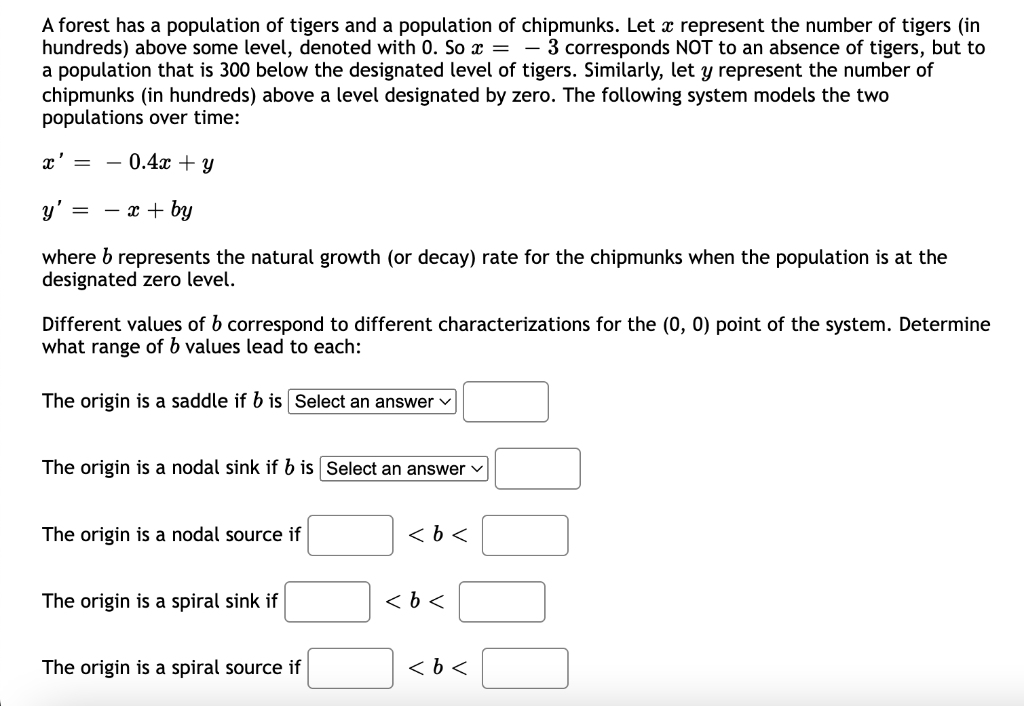Home /
Expert Answers /
Advanced Math /
nbsp-the-options-in-the-first-and-second-question-are-nbsp-equal-to-greater-than-less-th-pa827
(Solved): The options in the first and second question are: - Equal to - Greater than - Less th ...

- Equal to
- Greater than
- Less than
A forest has a population of tigers and a population of chipmunks. Let a represent the number of tigers (in hundreds) above some level, denoted with 0. So x = - 3 corresponds NOT to an absence of tigers, but to a population that is 300 below the designated level of tigers. Similarly, let y represent the number of chipmunks (in hundreds) above a level designated by zero. The following system models the two populations over time: x' = -0.4x + y y' = x + by where b represents the natural growth (or decay) rate for the chipmunks when the population is at the designated zero level. Different values of b correspond to different characterizations for the (0, 0) point of the system. Determine what range of b values lead to each: The origin is a saddle if b is Select an answer ? The origin is a nodal sink if b is Select an answer The origin is a nodal source if
Expert Answer
The required answers are The origin is a saddle if is greater than . The origin is a nodal sink if is less than . The origin is a nodal source if . The origin is a spiral sink if .. The origin is a spiral source if . Explanation- Given a forest has a